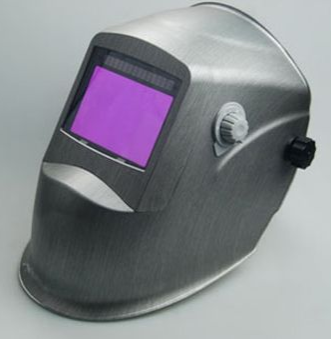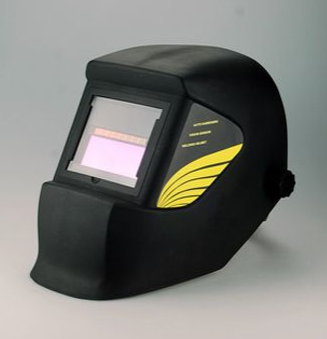If you’re currently a welder or looking to become one as your career or hobby, then safety gear should be of the utmost importance to you. And right on the top of any list of safety equipment will be a high-quality welding helmet.
How Do Auto Darkening Welding Helmets Switch To Dark?
Infrared Radiation Sensors
Most of the auto-darkening lens is triggered by the infrared radiation emitted by the welding process.
The front of the helmet’s lens has little red squares. They are the sensors that detect infrared radiation and switch the helmet to a dark state.
The older or more cost-effective helmets only have 2 sensors, whereas the premium / professional-grade welding helmets opt for 4.
This is why if you hold your TV remote in front of the lens and press a button, it will switch it to weld mode / the dark state.

Auto Darkening Welding Helmet
What Is Inside The Auto Darkening Welding Helmet?
The auto-darkening lens is made up of several layers.
Ultraviolet and Infrared Light Filter
This is the layer that gives the lens the pinky-purple look. This layer filters out 99.9% of the infrared radiation and up to 99.997% of the ultraviolet light.
The glass is a good UV-B filter (ultraviolet light that causes sunburn). The reflective surface is actually made up of 11 different layers of metallic film.
5 layers of silver and 6 layers of aluminum oxide. The added layers filter out the remaining UV-A and UV-C.
The latest generation of filters now have up to 20 layers, totaling a thickness of 7 microns. Head exploding emoji.

Auto Darkening Welding Helmet
This layer filters the harmful light all of the time. So if you get a flash from the welder and it doesn’t switch, the harmful light has been stopped.
The only effect you will have is the bright light causing you to see stars for a moment.
Polarization Filter
The polarization filter is another thin piece of glass or plastic, with a thin chemical film applied to it.
A common compound is iodine that has been stretched so all of the molecules are in a straight line.
This only allows the light to pass though in a vertical wave.
The lens requires up to 3 polarization layers to filter the light to a level that the liquid crystal lens can use and the welder can see.
The polarizing filters are placed in 90 degree orientation to one another, to filter out a lot of the light.
Liquid Crystal Cell Filter
The liquid filter lenses are usually made of 2 thin pieces of glass with a thin transparent film of conductive coating. Indium tin oxide is the common surface treatment.
A spacer is used to strictly control the gap between the 2 layers. Inside are the liquid cells.
The liquid crystal cells need the light to be in a single wave form to be effective.







